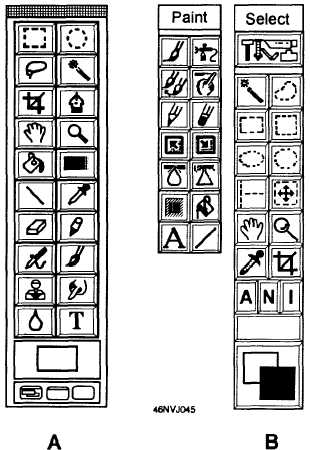Figure 3-13.—Photoshop and PhotoStyler tools.
television interviews where people do not want their
identity revealed.
COLOR CORRECTION
Imageediting programs also offer color correction
and calibration features. These color correction
features allow you to modify an image to get the best
possible quality to a color printer or other output device
(fig. 3-16). These color corrections are accomplished
by using a gamma curve.
The gamma curve represents the pixel values in the
original image on the horizontal axis. The
corresponding values of the displayed image are
represented on the vertical axis. Separate red, green,
and blue lines may be displayed so you can modify each
color independently. By increasing the slope, you can
raise the contrast level; this forces most of the pixels
toward the light and dark ends of the spectrum. By
raising or lowering the entire line, you can adjust the
brightness.
TRANSMITTING DIGITAL IMAGES
One of the biggest advantages of electronic imaging
is time. After a photograph is taken, it can be
transmitted anywhere in the world in a matter of
seconds. This makes images available immediately.
This immediacy is both critical and valuable to civilian
media teams and military organizations. With
electronic imaging, there is no film processing or
printing. What you need to do is activate a transmitter
and send it.
Several methods of transmitting electronic images
are used. One method of transmitting the image is using
the Sony Digital Information Handler with the Kodak
DCS 100. The Sony Digital Information Handler is a
digitizer and transceiver that can be connected to a
phone line or uplinked to a satellite. This unit uses a
still-video camera and 2-inch floppy disk.
Another method of transmitting images is by use of
the Kodak DCS 200. This unit can be hooked to a laptop
computer, such as a MacIntosh Powerbook, to
accomplish the same methods of transmission.
Companies, such as Harris Corporation and
Phototelesis Inc., have built rugged, portable image
processing workstations that are compatible with
standard U.S. Navy communication systems and
encryption devices. These devices provide a secure
means for transmitting tactical intelligence images
worldwide.
One problem you may encounter when attempting
to transmit images is locating a clear phone line or an
available satellite. A clear phone line is necessary to
ensure that a good image is transmitted.
Another factor you must consider when
transmitting images is the amount of time you are tying
up the circuit. The larger the file size, the longer it takes
to transmit the file. It is good practice to compress files
before transmission. When files are received at the
other end, they can be decompressed without loosing
quality.
You can see the major advantages of electronic
imaging. Images that used to take days or even weeks
to obtain can now be obtained in minutes.
ETHICS AND THE ELECTRONIC
IMAGE
The adoption and popularity of electronic imaging
raises important ethical questions. The altering of
images has existed since the beginning of photography.
3-17

